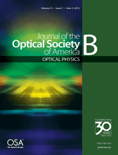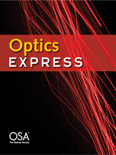
Plasmonics
metrics 2024
Illuminating the Future of Biochemical Technologies
Introduction
Plasmonics, published by Springer, is a prestigious journal dedicated to advancing the field of plasmonics and its interdisciplinary applications, with a particular focus on biochemistry, biophysics, biotechnology, and nanoscience. Established in 2006, this peer-reviewed journal serves as a vital platform for researchers to disseminate groundbreaking findings and innovative methodologies related to the manipulation and application of surface plasmons for various technologies. Featuring an impressive Q3 ranking in critical scientific categories, including Biochemistry and Nanotechnology, Plasmonics is recognized for its contribution to enhancing the understanding of nanoscale phenomena and their relevance to contemporary research and development. While currently not an open-access publication, Plasmonics continues to play a key role in bridging academic inquiry and practical application, making it indispensable for professionals and students striving to stay at the forefront of this dynamic field.
Metrics 2024
 0.44
0.44 3.30
3.30 2.50
2.50 72
72Metrics History
Rank 2024
Scopus
IF (Web Of Science)
JCI (Web Of Science)
Quartile History
Similar Journals

JOURNAL OF OPTOELECTRONICS AND ADVANCED MATERIALS
Advancing the Frontiers of Optoelectronics and Materials ScienceJOURNAL OF OPTOELECTRONICS AND ADVANCED MATERIALS, published by the NATL INST OPTOELECTRONICS in Romania, is an esteemed academic journal dedicated to disseminating innovative research in the fields of optoelectronics and advanced materials. With an ISSN of 1454-4164 and E-ISSN 1841-7132, the journal provides a platform for researchers to share their findings and technological advancements from 1999 to 2024. Despite being placed in the Q4 quartile across several categories—including Atomic and Molecular Physics, Condensed Matter Physics, and Electrical and Electronic Engineering—the journal serves as an essential resource for highlighting significant developments in its respective fields. Researchers and professionals may find valuable insights that foster collaboration and inspire further investigation, thereby contributing to the continuous evolution of optoelectronics and materials science.

JOURNAL OF THE OPTICAL SOCIETY OF AMERICA B-OPTICAL PHYSICS
Connecting Researchers to the Heart of Optical ScienceJOURNAL OF THE OPTICAL SOCIETY OF AMERICA B-OPTICAL PHYSICS, published by Optica Publishing Group, serves as a leading platform for groundbreaking research in the fields of optical physics, atomic and molecular physics, and statistical and nonlinear physics. With an ISSN of 0740-3224 and an E-ISSN of 1520-8540, this esteemed journal has been in circulation since 1984 and is dedicated to advancing the understanding of optical phenomena and related technologies. It holds a commendable position in the academic community, with a 2023 Scopus ranking reflecting its significance—placing it in the top quartile for both Atomic and Molecular Physics and Statistical and Nonlinear Physics. Although it is not an open-access publication, it provides extensive access options to ensure that research is disseminated effectively within the scientific community. This journal is instrumental for researchers, professionals, and students alike, aiming to keep them informed of the latest advancements and trends in optical science. With a convergence of expertise and innovation, JOSA B continues to play a pivotal role in shaping the future of optical research.

OPTICS AND SPECTROSCOPY
Advancing Knowledge in Atomic and Molecular PhysicsOptics and Spectroscopy is a pivotal peer-reviewed journal published by Pleiades Publishing Inc, focusing on the intricate fields of atomic and molecular physics, as well as optics. Established in 1972, and enjoying a legacy of convergence periods that reinforce its commitment to the evolving landscape of these scientific domains, the journal aims to disseminate high-quality research that advances our understanding of light-matter interactions, electronic materials, and spectroscopic techniques. Despite its current Q4 categorization in both the Atomic and Molecular Physics and Electronic, Optical and Magnetic Materials fields, with corresponding Scopus rankings reflecting its developing influence, the journal remains a valuable resource for researchers and professionals seeking to publish their findings, explore new methodologies, and connect with a community dedicated to innovation in optics. Although there is currently no open access option, the journal's expansive readership and its stability in publication over the decades make it an important platform for both established and emerging researchers in the field.

Sensors and Actuators Reports
Transforming Knowledge into Practical SolutionsSensors and Actuators Reports, published by Elsevier, is a premier open access journal that has been contributing to the fields of physics, computer science, and engineering since its establishment in 2019. With its ISSN 2666-0539, this journal has rapidly gained recognition, achieving Q1 quartile rankings across multiple categories, including Atomic and Molecular Physics, Computer Science, and Electrical Engineering. By providing a platform for high-quality research and innovative findings, Sensors and Actuators Reports is dedicated to advancing knowledge in sensor and actuator technologies, which are pivotal for numerous applications in modern science and industry. The journal's performance is underscored by its impressive Scopus rankings, placing it in the top tiers across various disciplines. Open access ensures that research is widely disseminated, fostering collaboration and enabling researchers, professionals, and students alike to engage with the latest advancements in their fields.

Light-Science & Applications
Transforming Ideas into Light-Based ApplicationsLight-Science & Applications is a prestigious open-access journal published by SPRINGERNATURE, dedicated to advancing the fields of Atomic and Molecular Physics, Optics, and Electronic, Optical, and Magnetic Materials. Established in 2012 and located in the United Kingdom, this journal has rapidly gained recognition, evidenced by its impressive 2023 rankings; it is situated in Q1 within its categories, boasting a rank of #5 out of 224 in Physics and Astronomy and #8 out of 284 in Materials Science, placing it in the esteemed 97th percentile. It is committed to disseminating high-quality research that explores innovative applications of light and materials science, making it an invaluable resource for researchers, professionals, and students alike. As an open-access platform, Light-Science & Applications ensures that its research is freely accessible, fostering collaboration and knowledge exchange within the scientific community. With its converged years spanning from 2012 to 2024, the journal remains at the forefront of impactful developments in light science.

Journal of Nanophotonics
Catalyzing Collaboration in Nanophotonic ResearchThe Journal of Nanophotonics, published by SPIE-SOC Photo-Optical Instrumentation Engineers, is an esteemed platform dedicated to advancing the field of nanotechnology through pioneering research in photonics. Since its inception in 2007, this journal has become instrumental in disseminating innovative findings and fostering collaborative discussions, especially in the domains of Condensed Matter Physics, Electronic, Optical and Magnetic Materials, and Nanoscience and Nanotechnology. Currently ranked within the Q3 category across these fields, it serves as a vital resource for academics, industry professionals, and students keen on exploring the multifaceted applications and implications of nanophotonic technologies. With its convergence set to continue until 2024, the journal offers a non-open-access model, ensuring rigorous peer-review standards and high-quality publications that contribute to the global body of knowledge.

Advanced Photonics Research
Illuminating the Future of PhotonicsAdvanced Photonics Research is a leading open-access journal published by WILEY, dedicated to advancing the field of photonics through rigorous research and comprehensive reviews. With its ISSN 2699-9293, the journal aims to disseminate innovative findings in areas such as photonic materials, devices, systems, and applications. Since transitioning to an Open Access model in 2020, it has significantly increased accessibility for researchers, professionals, and students alike, promoting wider dissemination and collaboration within the global photonics community. The journal's commitment to high-quality, peer-reviewed content ensures it remains an essential resource for those seeking to stay at the forefront of photonics research. Positioned to influence both academia and industry, Advanced Photonics Research is an invaluable platform for sharing cutting-edge discoveries that drive the future of technology.

OPTICS EXPRESS
Illuminating the Future of Optical ScienceOPTICS EXPRESS is a premier peer-reviewed journal published by the Optica Publishing Group, specializing in the rapidly evolving fields of Atomic and Molecular Physics and Optics. With an impressive Q1 ranking in its category and positioned in the 75th percentile among leading journals in Physics and Astronomy, OPTICS EXPRESS serves as a vital platform for disseminating innovative research findings. Since its inception in 1997 and transitioning to Open Access in 1998, the journal has ensured that groundbreaking scientific contributions are accessible to a global audience, fostering collaboration and advancement in optical science. Additionally, with annual publications converging from 1997 to 2024, this journal not only tracks the latest advancements but also shapes the future landscape of optics research. Whether you are a seasoned researcher, a dedicated professional, or a passionate student, OPTICS EXPRESS offers a wealth of knowledge and a commitment to excellence in the optics community.

Photonic Sensors
Connecting Theory with Practical Solutions in PhotonicsPhotonic Sensors is a premier open access journal published by Springer, focusing on the rapidly evolving fields of Photonics, Materials Science, and Optics. Since its inception in 2011, this journal has become a vital platform for disseminating cutting-edge research and innovative applications in photonic technologies, addressing a range of topics from optical sensors to advanced materials for photonics. With an impressive impact factor and categorized in the Q2 quartile across both Atomic and Molecular Physics and Electronic, Optical and Magnetic Materials, it ranks among the top publications in its field (47th out of 284 and 38th out of 224, respectively, in Scopus). The journal actively encourages contributions that not only advance theoretical understanding but also pave the way for practical solutions in various industries. Photonic Sensors is essential reading for researchers, professionals, and students keen on exploring the frontiers of photonic research, with open access ensuring wide visibility and engagement within the scientific community.

OPTICA APPLICATA
Transforming Discoveries into Practical SolutionsOPTICA APPLICATA, published by Wroclaw University of Science and Technology, is a crucial platform for advancing knowledge in the fields of Atomic and Molecular Physics and Optics. With an ISSN of 0078-5466 and an E-ISSN of 1899-7015, this journal serves as a vital resource for researchers, professionals, and students seeking to explore the latest developments and applications in optical science and engineering. Although currently categorized in the fourth quartile in both Atomic and Molecular Physics and Electronic, Optical and Magnetic Materials, its commitment to publishing high-quality research articles, reviews, and technical notes remains unwavering. The journal covers diverse topics from practical applications to theoretical insights and fosters a collaborative environment for global contributors. While it does not offer an open access option, the journal is accessible through university libraries and institutional subscriptions. With an eye towards bridging academic research with real-world applications, OPTICA APPLICATA is well-positioned to influence advancements in photonics and materials science through ongoing issues from 1988 to 2024.